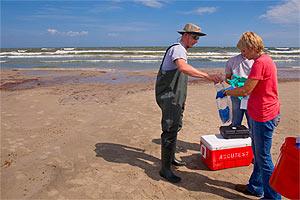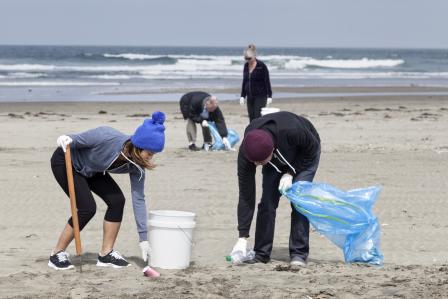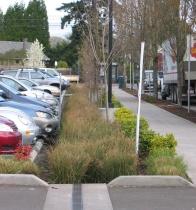ACT: In Your Community
Even if you do not live near the beach, you can still protect the water quality by learning how pollution in your local stream or watershed affects water quality at downstream beaches. You can use the links provided to find out about volunteer programs and opportunities as well as state, federal, or local programs for protecting the quality of the water in your neighborhood and at the beach.


Clean-ups
Participate in a beach, river, or stream clean-up event in your area and make a difference! By removing trash and other debris from around your local waterway, you are helping to keep your water clean and safe from pollution! Contact your state or local Parks and Recreation Department or environmental organizations for information about clean-ups in your area. And, if you don’t see a cleanup scheduled in your area, you can always organize your own!
Volunteer Monitoring
One way to get involved is by becoming a volunteer water quality monitor. Volunteers analyze water samples for different measures of beach health, catalog and collect beach debris, and restore degraded habitats.
- EPA’s Volunteer Monitoring
This page provides information and resources for water quality monitoring.
Protecting Your Local Streams and Creeks
Most beach water is polluted from pollution-generating activities upstream. It is important for you to know about pollutants entering the water from contributing areas.
- Surf Your Watershed web tool
A watershed is the land area where all water under it or draining off it goes to the same place. The Surf Your Watershed web tool provides information about pollutants and sources that affect the cleanness of the water in your local area. - Adopt-Your-Watershed
A watershed is the land area where all water under it or draining off it goes to the same place. Watershed groups are very effective in identifying and stopping pollution problems by working at the local level. - EPA’s National Catalog of Watershed Groups
A watershed is the land area where all water under it or draining off it goes to the same place. EPA’s national catalog provides a list of organizations, watershed alliances, local groups, and schools that conduct activities such as volunteer monitoring, cleanups, and restoration projects. - Protect Coastal Waters from Pollution from Diffuse Sources
When rain falls or snow melts, the seemingly negligible amounts of chemicals and other pollutants around your home and lawn get picked up and carried through storm drains to the local waterway. The cumulative effect of these pollutants can be significant. - Protect Coastal Watersheds and Ocean Resources
Discover a variety of EPA programs that protect coastal watersheds and ocean resources.
Beach Protection Policies
Engage in your local municipal planning processes and take a role in protecting beaches.

- Green Infrastructure
Green infrastructure is an approach for reducing stormwater runoff in your community. Green infrastructure soaks up rainfall which carries pollution from streets, parking lots, rooftops, and yards. Some communities may also encourage home businesses and owners to voluntarily adopt green infrastructure practices. - Septic System Setbacks and Technology
Your community may have policies that require setbacks for septic systems from water resources. These setbacks may apply to septic systems close to coastal waters or tributaries. Setbacks are designed to increase the distance between septic systems and coastal waters to prevent bacteria, nutrients, and other pollution from entering coastal waters and beaches. Communities may require property owners to install alternative septic systems to achieve higher levels of treatment in coastal areas, or increase the level of management required for septic systems. - Adaptation to Sea Level Rise
Development on or near sensitive beach habitats such as sand dunes can inhibit the ability of beaches and shorelines to adapt to climate change. Beaches and their dune systems migrate inland in response to sea level rise. In developed areas, governments and landowners have usually attempted to hold back the sea by adding sand to eroding beaches or erecting dikes, seawalls, revetments, and other shore protection structures. These practices prevent beaches from migrating inland with rising sea levels, and could result in beaches disappearing under sea water. - Rolling easements
These are a series of non-regulatory approaches for ensuring that wetlands and beaches can migrate inland, as people remove buildings, roads, and other structures from land as it becomes submerged.
